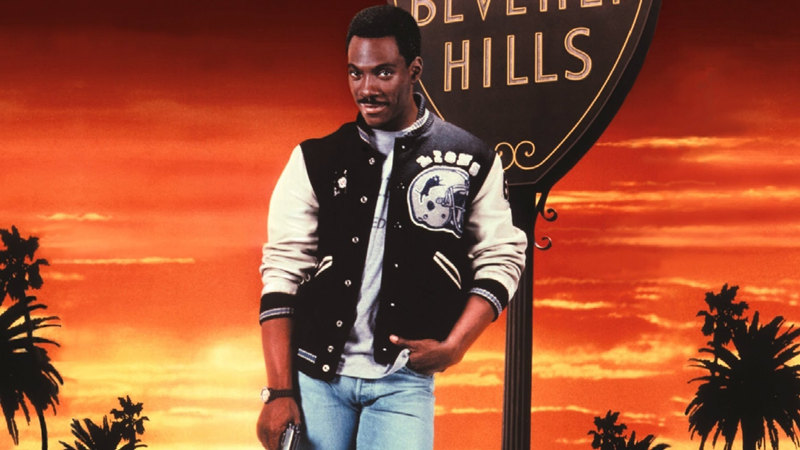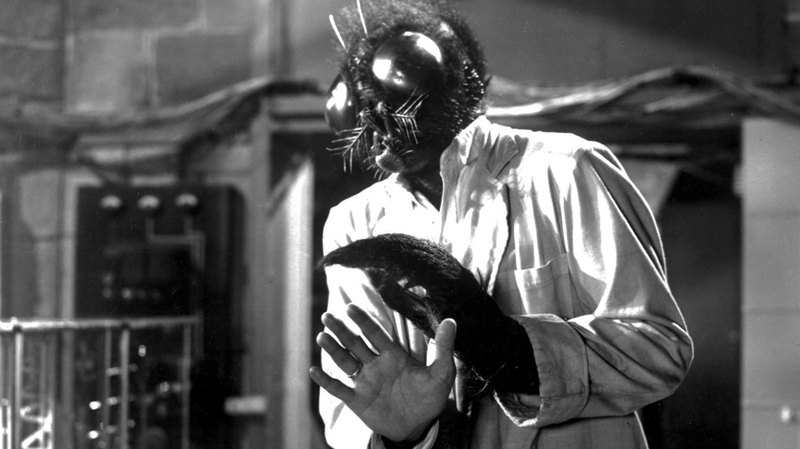“Down By Law” (1986) begins with a shot of a mausoleum, and with a few vintage Jarmuschian lateral tracking shots through the deserted streets of New Orleans, eventually settles on a set of characters who are only slightly more alive. Bogged down by the torpor of a humid morning in the Crescent City, the first few characters we see in close-up are lying on pillows, lounging in chairs, or leaning against a wall for support. Jack (John Lurie) musters just enough energy to stumble out of bed; Zack (Tom Waits) musters just enough to stumble into bed.
It’s not the only time Jack and Zack will rhyme. Both men are struggling to succeed in their respective professions. Jack talks a big game, but remains a small-time pimp. Zack can talk up a storm too, but the aspiring deejay can’t keep a steady radio gig because he doesn’t know how to “jerk people off.” Zack and Jack are both involved with women who question why their men don’t ever hit them. And both Zack and Jack fall for schemes that they know full well are too good to be true, not because they are ignorant, but simply because they are so bored they’re just looking for something to do.
They both wind up in the same cell in the Orleans Parish Prison where they find they are far too similar to get along. They fight occasionally, but that requires too much effort, so they settle into a lazy routine of mutual ignorance until they are awakened by a walking jolt of Red Bull named Bob (Roberto Benigni). Bob is an Italian immigrant with a tenuous command of English and a bottomless reservoir of bonhomie, and he is surely the sweetest murderer you’re ever likely to meet. Jack and Zack are too cool to be won over by his charms at first, but they can only resist his “I ‘ham’ a good egg” act for so long, and the trio become only somewhat reluctant friends.
Ever the minimalist (except when he’s not), writer-director Jim Jarmusch depicts prison life entirely in the space of this single, barren cell – just bunk beds and decaying white walls – where we spend the entire central third of the film. Bob’s introduction opens up the cramped space, as he uses his power of imagination first to sketch out a window, then, by way of the American movies he (mis)remembers from his youth, to concoct an escape plan so implausible that Jarmusch doesn’t even bother to depict it. One moment they are in their cells; the next they are running through a sewer, whooping their way to freedom as an unexplained rope that they must have shimmied down swings in the background.
They wander through the wooded bayous for an interminable spell, breaking apart and then reuniting, as the barking police dogs eventually fade away. As they search for signs of civilization, it is surely Bob’s power of imagination that calls to life their salvation in the form of an unlikely little shack/sort-of-restaurant marked with the name “Luigi’s Tintype” and inhabited by an innocent Italian woman (Nicoletta Braschi, Benigni’s wife) who just happens to be looking for a sweet little Italian “killer” to call her own.
“Down By Law” was Jarmusch’s follow up to his indie breakthrough “Stranger Than Paradise,” the laconic, low budget feature that propelled him to unlikely stardom, and it repeats many of the same themes and setups. Once again, Jarmusch employs a foreigner to disrupt the routines of two unambitious Americans, and once again he lovingly lingers on scenes of urban and industrial decay. This time Jarmusch brings board cinematographer Robby Muller, whose black-and-white compositions are immaculately ramshackle, balancing hard geometric squares of light in interior spaces with soft ambient sunlight that never quite fully illuminates the sinuous outdoor scenes.
Jarmusch has always liked to cast musicians, and Lurie (co-founder of the Lounge Lizards) and Waits are both prototypical Jarmusch performers, indulgently cool and more a collection of poses and attitudes than fully developed characters. Benigni has never been more likable (the shame of “Life is Beautiful” was still a decade away) than in this film that introduced him to non-Italian audiences. He is so permanently caffeinated that his delivery doesn’t vary whether he’s talking to other people or launching into an extended monologue about his rabbit-killing mother; his mania comes off as both sincere and endearing. He not only thaws out the ironic hipster hearts of Jack and Zack, but he inspires an entire New Orleans cell block to chant, “I scream-a! You scream-a! We all scream-a for ice cream-a!”
Perhaps that’s not what you expect from a prison movie but Jim Jarmusch has always adhered to his own personal vision, content to stake out his own tiny plot of land far from Hollywood. “Down By Law” may have been “more of the same” from the director of “Stranger Than Paradise,” but why would anyone complain about that?
Video:
Did Criterion really release this on DVD ten years ago? Good grief, I actually remember buying this right after I moved to California. The film is presented in its original 1.78:1 aspect ratio. The 1080p transfer is a big step up from the strong but not spectacular standard transfer. However, it is not flawless. In the scene where Benigni launches into a monologue by the fire, the halo from the light shows some evidence of artifacting, as was the case on the SD – it just looks a bit pixelated. Overall though, the high-def transfer is very strong with exceptional black-and-white contrast that really does justice to Robby Muller’s knockout photography. There’s a shot early in the film that I have always loved, a shot of a hallway with a square of light low on the wall just before Jack walks into frame and goes to knock on the door and seal his fate. It’s a beautiful Hopperesque composition and it really shows up in sharp relief in high-def.
Audio:
The linear PCM Mono track is, as always with Criterion, clean as a whistle. It isn’t very dynamic (Jarmusch really began layering his sound design with later films, esp. “The Limits of Control,” but here it’s pretty straightforward) but the music (score by John Lurie, songs by Tom Waits) sounds robust enough. Optional English subtitles support the English audio. You can also listen to the film with a French dub, something Jarmusch was reluctant to do and talks about briefly in a short feature accessible from the Audio Options menu. You can also listen to an Isolates Music track.
Extras:
All of the extras have been imported from the relatively loaded 2002 SD release.
Jarmusch doesn’t really do commentary tracks, but as he also did for “Mystery Train,” he has contributed a lengthy audio recording (73 min.) in which he shares his “Thoughts and Reflections” on the film. In a neat companion piece to this audio, we also get audio recordings of phone calls Jarmusch placed to Waits (29 min.), Benigni (12 min.) and Lurie (24 min.) to prepare for the DVD. Jarmusch adds yet another audio recording (25 min.) in which he answers fans’ email questions.
The disc also includes an interview with Robby Muller (22 min.), recorded in 2002 in Amsterdam.
Criterion also offers a collection of material from the 1986 Cannes Film Festival (42 min.) including the press conference with Jarmusch and most of the cast minus Waits. You can also listen to a 1986 John Lurie interview (11 min.) for French TV with an optional 2002 commentary track by Lurie who professes to be embarrassed by his self-conscious hipness.
Apprentice editor Jay Rabinowitz (later the editor on much of Jarmusch’s work) assembles a string of Outtakes, 16 scenes in all (24 min. total) and including an Alternate Ending.
“It’s All Right With Me” (5 min.) is a music video directed by Jarmusch of a Tom Waits cover of Cole Porter’s song for a 1990 AIDS Benefit Album. Jarmusch also chips in with a brief audio interview (2 min.) about the video.
The collection is rounded off by a Production Polaroids Gallery, a Location Stills Gallery, and an Original Theatrical Trailer (2 min.)
The slim fold-out insert booklet includes a four page essay by Luc Sante.
Film Value:
If “Down By Law” doesn’t seem particularly realistic, it surely isn’t intended to be as the constituent parts of this miniature myth are assembled more from other movies (Fuller, Renoir, etc.) than from reality, but what else would you expect from a compulsive cinephile like Jarmusch? And if it’s not quite the masterpiece that “Stranger Than Paradise” was, well, you can’t really compete with a film credited with reinvigorating the entire American independent scene in the 1980s. At least not your next time out of the box.


